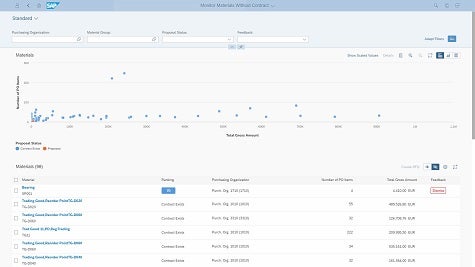SAP this week advanced its campaign to automate ERP processes using artificial intelligence (AI) technologies via an update to SAP S/4HANA Cloud that adds dozens of additional processes that have been optimized using machine learning algorithms.
Sven Denecken, senior vice president and head of product management and co-innovation at SAP Cloud ERP, says the 1808 release of SAP S/4HANA Cloud is especially noteworthy for the focus SAP is putting on automating manufacturing processes. For example, organizations can now take advantage of machine learning algorithms to optimize replenishment of raw materials by analyzing historical data in real time. Those capabilities are now extensible across multiple sites via a multi-tenant instance of SAP S/HANA Cloud as well, adds Denecken.
In terms of professional services, Denecken says, SAP has added an AI-infused module that makes sure all future staffing requests are fulfilled on time within specific budget constraints.
In general, Denecken says, SAP is on track to automate 50 percent of all ERP processes using AI models within the next two years. Rather than building their own AI models, Denecken contends that most organizations will wind up consuming AI technologies via packaged applications where most of the heavy lifting in terms of training those AI models is done by vendors such as SAP.
“Customers may not even perceive how a process has been automated,” says Denecken. “Steps will just go away.”
While many organizations will invest in creating their own AI models to gain a competitive edge, it’s becoming apparent that most organizations will first experience AI as functionality that gets embedded within a packaged application. In fact, within the next two years, it’s probable that every packaged application will make extensive use of embedded machine learning capabilities.
What will be interesting to see next is to what degree those capabilities will drive a potential massive wave of upgrades across enterprise applications that are about to become a whole lot smarter than existing legacy applications.



